Related Research Articles
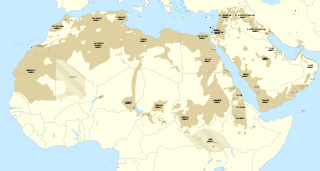
The Semitic languages are a branch of the Afroasiatic language family. They include Arabic, Amharic, Aramaic, Hebrew, and numerous other ancient and modern languages. They are spoken by more than 330 million people across much of West Asia, North Africa, the Horn of Africa, Malta, and in large immigrant and expatriate communities in North America, Europe, and Australasia. The terminology was first used in the 1780s by members of the Göttingen school of history, who derived the name from Shem, one of the three sons of Noah in the Book of Genesis.

Geʽez is an ancient South Semitic language. The language originates from what is now Ethiopia and Eritrea.
Ugaritic is an extinct Northwest Semitic language, classified by some as a dialect of the Amorite language. It is known through the Ugaritic texts discovered by French archaeologists in 1928 at Ugarit, including several major literary texts, notably the Baal cycle.
The Canaanite languages, sometimes referred to as Canaanite dialects, are one of three subgroups of the Northwest Semitic languages, the others being Aramaic and Amorite. These closely related languages originate in the Levant and Mesopotamia, and were spoken by the ancient Semitic-speaking peoples of an area encompassing what is today, Israel, Jordan, the Sinai Peninsula, Lebanon, Syria, as well as some areas of southwestern Turkey (Anatolia), western and southern Iraq (Mesopotamia) and the northwestern corner of Saudi Arabia.
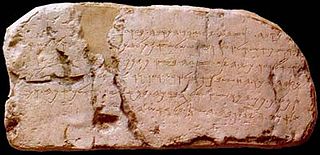
Biblical Hebrew, also called Classical Hebrew, is an archaic form of the Hebrew language, a language in the Canaanitic branch of the Semitic languages spoken by the Israelites in the area known as the Land of Israel, roughly west of the Jordan River and east of the Mediterranean Sea. The term ʿīḇrîṯ "Hebrew" was not used for the language in the Hebrew Bible, which was referred to as שְֹפַת כְּנַעַן śəp̄at kənaʿan "language of Canaan" or יְהוּדִית Yəhûḏîṯ, "Judean", but it was used in Koine Greek and Mishnaic Hebrew texts.
Northwest Semitic is a division of the Semitic languages comprising the indigenous languages of the Levant. It emerged from Proto-Semitic in the Early Bronze Age. It is first attested in proper names identified as Amorite in the Middle Bronze Age. The oldest coherent texts are in Ugaritic, dating to the Late Bronze Age, which by the time of the Bronze Age collapse are joined by Old Aramaic, and by the Iron Age by Sutean and the Canaanite languages.
Jimmy Jack McBee Roberts, known as J. J. M. Roberts, is William Henry Green Professor of Old Testament Literature (Emeritus) at Princeton Theological Seminary in Princeton, New Jersey. A member of the Churches of Christ, Roberts attended Abilene Christian University before pursuing doctoral work at Harvard University.

Frank Moore Cross Jr. was the Hancock Professor of Hebrew and Other Oriental Languages at Harvard University, notable for his work in the interpretation of the Dead Sea Scrolls, his 1973 magnum opusCanaanite Myth and Hebrew Epic, and his work in Northwest Semitic epigraphy. Many of his essays on the latter topic have since been collected in Leaves from an Epigrapher's Notebook.
Gerald "Gary" Neil Knoppers was a professor in the Department of Theology at University of Notre Dame. He wrote books and articles regarding a range of Old Testament and ancient Near Eastern topics. He is particularly renowned for his work on 1 Chronicles, writing I Chronicles 1 – 9 and I Chronicles 10 – 29, which together comprise a significant treatment of the work of the Chronicler. In May 2005 the Canadian Society of Biblical Studies granted the R. B. Y. Scott Award to Knoppers for his two-volume Anchor Bible commentary on I Chronicles
Thomas Oden Lambdin was an American linguist and scholar of the Semitic and Egyptian languages. He received his Ph.D. in 1952 from the Johns Hopkins University Department of Near Eastern Studies, where his advisor was William Foxwell Albright; his dissertation was on "Egyptian Loanwords and Transcriptions in the Ancient Semitic Languages." He was appointed as an associate professor of Semitic Languages at Harvard University in 1964. He retired from Harvard in 1983 and served as Professor Emeritus until his death. He was admired not only for his research and his "tireless teaching", but for the quality of his introductory textbooks on Biblical Hebrew, Coptic, Ge'ez and Gothic language. His Festschrift, Working with No Data: Semitic and Egyptian Studies Presented to Thomas O. Lambdin includes a full bibliography of his publications, as well as chapters by John Huehnergard and Richard J. Clifford about their experiences as his students
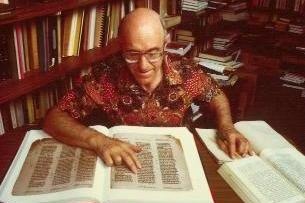
Francis Ian Andersen was an Australian scholar in the fields of biblical studies and Hebrew. Together with A. Dean Forbes, he pioneered the use of computers for the analysis of biblical Hebrew syntax. He taught Old Testament, History, and Religious Studies at various institutions in Australia and the United States, including Macquarie University, the University of Queensland, and Fuller Theological Seminary. His published works include the Tyndale commentary on Job, and Anchor Bible commentaries on Hosea, Amos, Habakkuk and Micah, and over 90 papers.
Jonas Carl Greenfield was an American scholar of Semitic languages, who published in the fields of Semitic Epigraphy, Aramaic Studies and Qumran Studies, and a distinguished member of the Israel Academy of Sciences and Humanities.
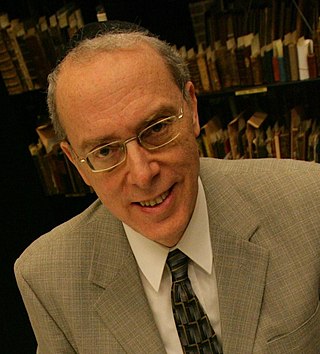
Richard C. Steiner is a Semitist and a scholar of Northwest Semitic languages, Jewish Studies, and Near Eastern texts. His work has focused on texts from as early as the Egyptian Pyramid texts to as late as medieval biblical interpretation. He is now retired from his position as professor of Semitics at the Bernard Revel Graduate School of Yeshiva University in New York City.
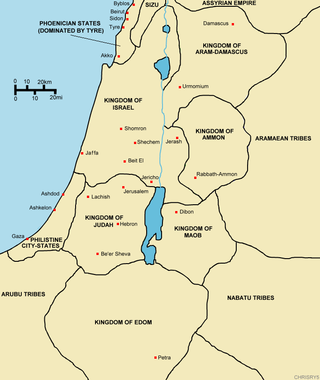
Israelian Hebrew is a northern dialect of biblical Hebrew (BH) proposed as an explanation for various irregular linguistic features of the Masoretic Text (MT) of the Hebrew Bible. It competes with the alternative explanation that such features are Aramaisms, indicative either of late dates of composition, or of editorial emendations. Although IH is not a new proposal, it only started gaining ground as a challenge to older arguments to late dates for some biblical texts since about a decade before the turn of the 21st century: linguistic variation in the Hebrew Bible might be better explained by synchronic rather than diachronic linguistics, meaning various biblical texts could be significantly older than many 20th century scholars supposed.
Michael Patrick O'Connor was an American scholar of the Ancient Near East and a poet. With the field of ANE studies he was a linguist of Semitic languages, with a focus on biblical Hebrew and biblical poetry.
Jeffrey Howard Tigay is a modern biblical scholar who is best known for the study of Deuteronomy and in his contributions to the Deuteronomy volume of the JPS Torah Commentary (1996).

Richard Samuel Hess is an American Old Testament scholar. He is Distinguished Professor of Old Testament and Semitic Languages at Denver Seminary.
Jo Ann Hackett is an American scholar of the Hebrew Bible and of Biblical Hebrew and other ancient Northwest Semitic languages such as Phoenician, Punic, and Aramaic.

Oded Lipschits is an Israeli professor in the Department of Archaeology and Ancient Near East Studies at Tel Aviv University. In 1997 he earned his Ph.D. in Jewish History under the supervision of Nadav Na'aman. He has since become a Senior Lecturer and Full Professor at Tel Aviv University and served as the Director of the Tel Aviv Institute of Archaeology since 2011. Lipschits is an incumbent of the Austria Chair of the Archeology of the Land of Israel in the Biblical Period and is the Head and founder of the Ancient Israel Studies Masters program in the Department of Archaeology and Ancient Near East Studies.
John Huehnergard is a Canadian-American specialist in Semitic languages, notable for his work on categorization, etymology, and historical linguistics.
References
- ↑ Philippi, F. W. M. (1878). "Das Zahlwort Zwei im Semitischen". Zeitschrift der Deutschen Morgenländischen Gesellschaft. 32: 21–98.
- ↑ Thomas O. Lambdin (1985). "Philippi's Law Reconsidered". In Ann Kort; Scott Morschauser (eds.). Biblical and Related Studies Presented to Samuel Iwry. Winona Lake, Indiana: Eisenbrauns. pp. 135–145. ISBN 9780931464232.
- ↑ Blake, Frank R. (1950). "The Apparent Interchange between a and i in Hebrew". Journal of Near Eastern Studies. 9 (2): 76–83. doi:10.1086/370960. JSTOR 542721. S2CID 161219913.
- ↑ Thomas O. Lambdin (1985). "Philippi's Law Reconsidered". In Ann Kort; Scott Morschauser (eds.). Biblical and Related Studies Presented to Samuel Iwry. Winona Lake, Indiana: Eisenbrauns. p. 136. ISBN 9780931464232.
- ↑ Huernergard, John (1992). Walter Ray Bodine (ed.). Linguistics and Biblical Hebrew. Eisenbrauns. pp. 212–216. ISBN 9780931464553. (citing several sources in footnotes 19-27).
- ↑ Thomas O. Lambdin (1985). "Philippi's Law Reconsidered". In Ann Kort; Scott Morschauser (eds.). Biblical and Related Studies Presented to Samuel Iwry. Winona Lake, Indiana: Eisenbrauns. p. 135. ISBN 9780931464232.
- ↑ Huehnergard, John. "Philippi’s Law." Encyclopedia of Hebrew Language and Linguistics. Edited by: Geoffrey Khan. Brill Online, 2013. Reference. URL. Retrieved 10 December 2013.
- ↑ Paul Joüon (Translated by T. Muraoka). A Grammar of Biblical Hebrew: Subsidia Biblica. Gregorian Biblical BookShop, 2006. ISBN 9788876536298. Pages 88, 90, 117, 138, 147, 223, 279, 293 (n. 1).